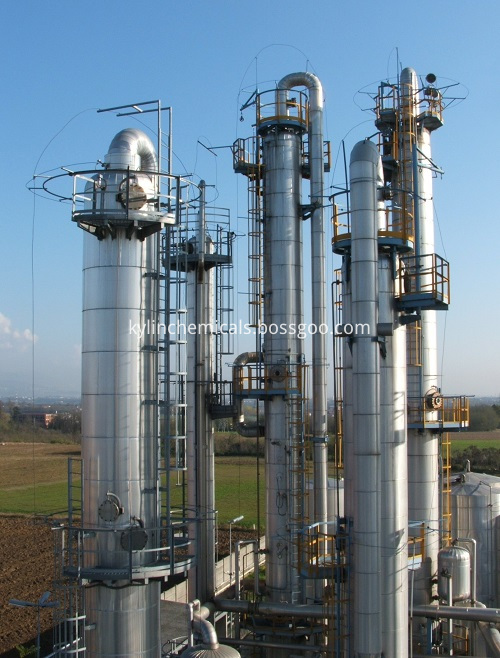With the massive discharge of oily sewage in production and life and the frequent occurrence of offshore crude oil leakage accidents, oil pollution in water has become a major issue that endangers human health and environmental safety. How to achieve efficient oil-water separation has become an urgent problem to be solved.
Recently, the publication of "ACS Nano" published online the research team of the associate researcher Wang Xiaoqing of the Institute of Wood Industry, Chinese Academy of Forestry, and made new progress in the preparation of high-elastic wood sponge materials and their application in oil-water separation.
Research has confirmed that porous adsorption materials with special surface wettability (such as superhydrophobic / lipophilic) can quickly and effectively achieve oil-water separation. At present, porous oil-absorbing materials mainly include synthetic polymer sponges (polyurethane, polystyrene), nano-carbon-based aerogels (graphene, carbon nanotubes), nano-cellulose aerogels, etc. Although the above materials have good oil absorption performance, they still have the disadvantages of poor biodegradability, expensive raw materials, and poor mechanical properties.
In order to solve the above problems, the wood modification research team developed a new type of wood sponge adsorbent material using natural renewable wood as the raw material for oil-water separation. Low-density balsa wood (90 mg / cm3) is selected as the raw material, and the lignin and hemicellulose in the cell wall of the wood are stripped out by chemical treatment in an orderly manner, the cellulose skeleton is retained, and then prepared by freeze-drying to obtain low density, high porosity, and Layered structure of wood sponge. In order to obtain hydrophobic / lipophilic properties of the material, a vapor deposition method is used to deposit a polysiloxane coating on the surface of the wood sponge cellulose skeleton, which gives the material good hydrophobic properties and retains its original pore structure. The resulting wood sponge material has high elasticity. After 100 cycles of compression testing, the rebound rate remains at 99%. The material has good oil absorption performance, the maximum oil absorption amount can reach 41 times of its own weight, and the adsorbed oil can be recovered by squeezing the oil discharge method, and the oil absorption amount is basically maintained after multiple extrusions. Taking advantage of the anisotropic properties of the material's liquid transmission, the research team designed a continuous oil absorption device using a wood sponge as a filter membrane to achieve continuous and efficient oil-water separation. The above results provide new ideas for the preparation of new wood-based oil-absorbing materials, and promote the application of wood, a natural renewable material, in the separation of oil and water.
After the publication of the paper, it attracted the attention of many internationally renowned technology media. The Science website has a special introduction on the topic of "Look at how wooden sponges absorb oil spills from water". The report pointed out that crude oil leakage is harmful to the marine ecological environment. At present, there is no simple and effective way to clean up the spilled crude oil. Now researchers have proposed a possible solution-reusable wood sponge oil-absorbing materials.
The American Chemical Society News Weekly titled "Wood Sponges Absorbing Oil from Water" and produced a promotional video to highlight and recommend this work. It is reported that PressPac selects 5 results published by the American Chemical Society every week to write special reports and push them to the media worldwide.
In addition, there are many international science and technology and news media such as the American Science Daily, the American Physicists Organization, Urico, the American Nanotechnology and Nanoscience Network, and the Scotsman Daily.
The research was supported by the National Thirteenth Five-Year National Key Research and Development Program and the National Natural Science Foundation of China.
Kylin Chemicals have been engaged in the research & manufacturing a selected range of Chemical Intermediates & specialties for over one decades,such as hydroxylamine sulfate.
We have the expertise in manufacturing high quality Aromatic Hydrocarbons specialties, serving our customers worldwide in the field of pharmaceuticals, agrochemicals, organic synthesis and coatings, etc. Our main aromatic hydrocarbon product include 2,3-Dihydroindene, Decahydronathalene, Tetrahydronaphthalene, Carbazole, Acenaphthene and Phenanthrene,1 2 3 4-tetrahydronaphthalene, etc.

Our manufacturing base have the advanced DCS operated hydrogenation & rectification facilities, effective quality-control systems, and a very professional technical team, assuring the quality, stability and sustainability to meet/exceed our customers` needs.
Aromatic Hydrocarbons & Specialties
Aromatic Hydrocarbons, Intermediates & Specialties,Advanced Intermediates,Chemical Intermediates,Chemical Specialities
Kylin Chemicals Co., Ltd. , https://www.kylin-chemicals.com